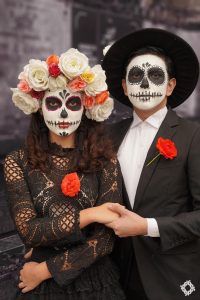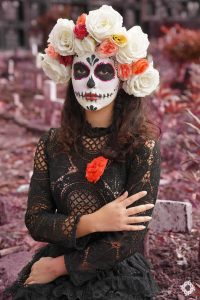Culture
A B A C A
Jing Ramos writes about how Francis Dravigny turned abaca into a high-profile luxury fabric.

Though the abaca resembles a banana plant, it is actually classified as hemp. Its scientific name is Musa textilis and is commonly known as Manila hemp ever since the Manila Galleon Trade in the sixteenth century.

Abaca also yields the highly sophisticated fabric t’nalak, handwoven by the T’bolis. The T’bolis are one of the early settlers in the untrammeled mountains of South Cotabato deep in the wilderness of Mindanao, the Philippines’ last outback. The T’bolis like certain aspects of their unique culture are a vanishing breed. They are however renowned as exceptional weavers and create an unusual tie-dyed cloth used locally for ropes, blankets and ceremonial robes.

In the T’boli community, abaca fiber is extracted from the mature, fruit-bearing wild banana plant. It takes two years for the abaca plant to mature. Utmost care is taken to preserve the length and silkiness in each fiber, as they are dried in the sun and stretched in a wooden frame that resembles an outsized comb whose teeth point up. Six trunks of the plant are needed to make fifteen meters of fabric. After the fiber has been neatly smoothened out, it is transferred to a bamboo frame unto which they are evenly and closely spread, one right next to the other, as in a backstrap loom. These are held evenly in place by a wooden bar in palm wood and laid directly across the fiber to be set later in an exact position in relation to the design.

Other than its natural cream state, the traditional colors woven in t’nalak are black and red for high contrast. The color combination works exceptionally well when set in the ikat process.
T’nalak weaving has long been a part of a tradition typical in a T’boli household and the weavers of this operation naturally comprise the female members of the community. The T’boli women involve themselves in a laborious system combining tie-dye technique with weaving. Whereas in other countries, tie-dyeing is done straight in a finished fabric, the t’nalak is dyed in individual threads. The process of weaving t’nalak among the T’bolis reflects their actual way of life.
That was abaca then, totally handcrafted, painstakingly slow and expensive to produce. The fibers were individually knotted and then dyed organically. To knot together one kilo of fiber required at least a week of intensive labor. It took almost two weeks in production to color the fibers, particularly the black which came from the leaves of the k’nalum tree, boiled and then steamed. It was said that the T’boli weavers dreamed the designs of their looms and often they themselves became temperamental in the process. The idea of imposing a deadline on the looms seemed almost impossible. Even the fibers tended to snap at midday when the temperature rose. The process of creating this cloth with its repetition of stylized animals or human designs requires absolute skill and patience. But once the finished products were washed, dried, waxed and pressed in cowrie shells, the results were often breath-taking and a touch luxurious. There is nothing quite like it until today.
 Surprisingly after over fifteen years, designer Francis Dravigny developed the product mostly through research and consultation in Lyon, France, the center of the textile industry in Europe. The abaca has had evolved into a more contemporary vein. The looms are now much wider and the designer has added a few components to the fiber itself and although it is still hand woven, the cloth has a more industrial edge.
Surprisingly after over fifteen years, designer Francis Dravigny developed the product mostly through research and consultation in Lyon, France, the center of the textile industry in Europe. The abaca has had evolved into a more contemporary vein. The looms are now much wider and the designer has added a few components to the fiber itself and although it is still hand woven, the cloth has a more industrial edge.
The Lyon based designer has in fact opened Interlace, a manufacturing firm located in Mandaue, Cebu that caters to the international fabric market. In these private quarters is where the actual abaca looms are being produced.
The process of warping or vertical thread preparation entails two thousand thread strands for one loom set-up in which twenty one meters is the minimum length in a single loom. The whole process of warping requires a full day.
The second process is called the loom feeding, which has three underlying procedures namely the eye, reed and pulling process. The eye procedure needs two thousand thread strands for one loom set-up. Each strand is being fed to the first and the second eye. It is in the reed procedure where two thousand metal or stainless dents will be required for the two thousand thread strands processing. Three days are the maximum span of time to do both eye and reed feeding on the loom. Pulling is the third procedure of loom feeding wherein the two thousand thread strands will be divided by seven knots. Each knot will be pulled to straighten the warp and then tied to the wooden beam to give an even and stronger tension to the thread.
 The final process is the horizontal weaving. Its basic components include a spooled tinagak and a wooden shuttle used to pass through the center of the warp. Upon reaching the other end of the loom, the weaver should swing the metal reed to compress the abaca in a repeated sequence. Then, the metallic reed is adjusted after every ten centimeters atop the loom to balance the thread. The wooden fabric should be rolled on the beam after every thirty centimeters to give tension to the fabric. In a day, the basic quota for every weaver reaches up to one and a half meters.
The final process is the horizontal weaving. Its basic components include a spooled tinagak and a wooden shuttle used to pass through the center of the warp. Upon reaching the other end of the loom, the weaver should swing the metal reed to compress the abaca in a repeated sequence. Then, the metallic reed is adjusted after every ten centimeters atop the loom to balance the thread. The wooden fabric should be rolled on the beam after every thirty centimeters to give tension to the fabric. In a day, the basic quota for every weaver reaches up to one and a half meters.
- by JING RAMOS photography Genesis Raña
Culture
Cebuano Pride: The National Museum of Cebu

Pride of Cebu
By Eva Gullas
photos courtesy of DOT

Cebu City Tourism’s Neil Odjigue, Cembeth Hortillano and CCTC Chairperson Joy Pesquera

Museum Director Jeremy Barns, Maryanne Arculli, Andronik Aboitiz and wife Doreen, Amanda Luym

Some of the abstract art from the New York collection

Writer Eva Gullas beside Elmer Borlongan’s Battle of Mactan
Culture
The Uncommon Traditions that Mexicans and Filipinos share when celebrating the Day of the Dead.

Dia de los Muertos
By Allain Dumon Fonte
The 2nd of November is All Soul’s Day, a holiday that is very important to many Filipinos to remember our loved ones who passed on. This is also widely celebrated in Mexico as “Dia De los Muertos” or in English, “The Day of the Dead”. And Mexicans celebrate the 2nd of November grander than they celebrate Christmas. Well, you can witness it from the Disney movie, “Coco”.
As All Soul’s Day or Dia de los Muertos is about to end, here are some interesting traditions and superstitions that Filipinos and Mexicans share:
1. IT IS NOT ON THE 31st OF OCTOBER
Dia de los Muertos or All Soul’s Day is not practiced on October 31st or on the Hallow’s Eve as many other western cultures practice; but we celebrate it on the 2nd of November. We celebrate November 1st as All Saint’s Day or the Day of the Holy, while in Mexico they call it Dia de los Innocentes or Dia de los Angelitos to commemorate the children who died too early in life.
2. THE RITUAL
Both in Mexico and in the Philippines, we visit the grave of our loved ones and we clean it well. This is a ritual to honour their resting places and to let them know that they are never forgotten.
3. FLOWERS INVITE SPIRITS
In Mexico, they believe that the scent of flowers attract spirits. So the flower offerings are invitation to their dead loved ones to visit the living families. While in the Philippines, we believe that flowers offered to the dead exalt the souls and somehow fill in the sadness that we feel when missing our dead loved ones.
Most of the time, Filipinos choose all-white flowers to offer because white is the absence of colour, which means the absence of Joy and happiness. White also symbolises purity of soul which we hope our dead loved ones will attain as they journey to heaven. While in Mexico, they have the yellow Mexican marigolds as the official flowers of the dead that will guide them in their journey to the afterlife.
4. THE LEGEND OF THE MONARCH BUTTERFLIES
Both cultures believe that monarch butterflies are dead loved ones who visit us and show their appreciation that we have not forgotten them. A presence of monarch butterflies also means that our dead loved ones are always there guiding us and looking after us.
5. A PICNIC IN THE GRAVEYARD
Spending a night at the graveyard and picnicking with the rest of the family may sound very creepy to many; but to both Filipino and Mexican cultures, picnicking and spending a night at the cemetery is a must to show our love to our dearly departed. It is the only time in the year that families gather and tell stories of the dead loved ones and how colourful or how great their lives were.
6. FOOD FOR THE DEAD
In Mexico, they have what they call “ofrendas” or an altar where the pictures of their dead loved ones are displayed and offered with flowers, candles, and their favourite food. Very similar to the Filipino culture of cooking the favourite food of our dead loved ones and everyone in the family enjoys the food for dinner.
My family tradition involves me driving all the way to Colon street and buy that famous Snow Sheen’s “pancit canton”. This is my granddad’s favourite snack. Sadly, the old Visayan Restaurant is no longer there. My late uncle and my late grandpa love their sweet ad and sour fish. We also set up an “ofrenda” on their graveyard and eat their favourite food while picnicking in the cemetery. We do not spend a night in the cemetery; but while we are picnicking there, we usually play the songs of Pilita Corrales and Susan Fuentes that my late grandpa used to listen every afternoon while enjoying his coffee, pan de sal, and pancit canton.
What about your family traditions? Share your thoughts by commenting to this article.
 MODEL: Michael Joseph Mortola Enriquez & Alexis Wingfield
MODEL: Michael Joseph Mortola Enriquez & Alexis Wingfield
PHOTOGRAPHER: Gianne Paolo Anciano
HMUA/DESIGNER: Hazel Ocaba
STYLING: GPA Lifestyle + Clothing
Culture
Catch Ted Lasso the Emmy Award Winning Comedy Series on Apple TV+

Rating: *****/ *****
The multi award–winning comedy series airing on Apple TV+ is one of my favorite shows. Ted Lasso starring Jason Sudeikis is about a fun good-natured American football coached hired by a British soccer club (AFC Richmond in London) to become their new coach. In spite of the fact that Ted has no experience or knowledge about British football/soccer, his positive demeanor and charm helps him overcome the animosity of the team’s players, staff and fans. Eventually Ted wins over the team and the locals as they fight for position in the English Premier League.

The show won the 2021 Primetime Emmy Award for Outstanding Comedy Series and 7 Emmy Awards in its 2 seasons and Season 3 is just around the corner. You can catch Seasons 1 & 2 of Ted Lasso on Apple TV+
-

 Fashion2 months ago
Fashion2 months agoThe Qipao As Interpreted by Innovative Filipino Designers: JC BUENDIA
-

 Fashion2 months ago
Fashion2 months agoThe Qipao As Interpreted by Innovative Filipino Designers: PHILIP RODRIGUEZ
-

 Fashion2 months ago
Fashion2 months agoThe Qipao As Interpreted by Innovative Filipino Designers: PROTACIO EMPACES
-

 Fashion3 months ago
Fashion3 months agoThe Qipao As Interpreted by Innovative Filipino Designers: EDWIN AO
-

 Fashion3 months ago
Fashion3 months agoThe Qipao As Interpreted by Innovative Filipino Designers: VIC BARBA
-

 Fashion3 months ago
Fashion3 months agoThe Qipao As Interpreted by Innovative Filipino Designers: RAJO LAUREL









You must be logged in to post a comment Login